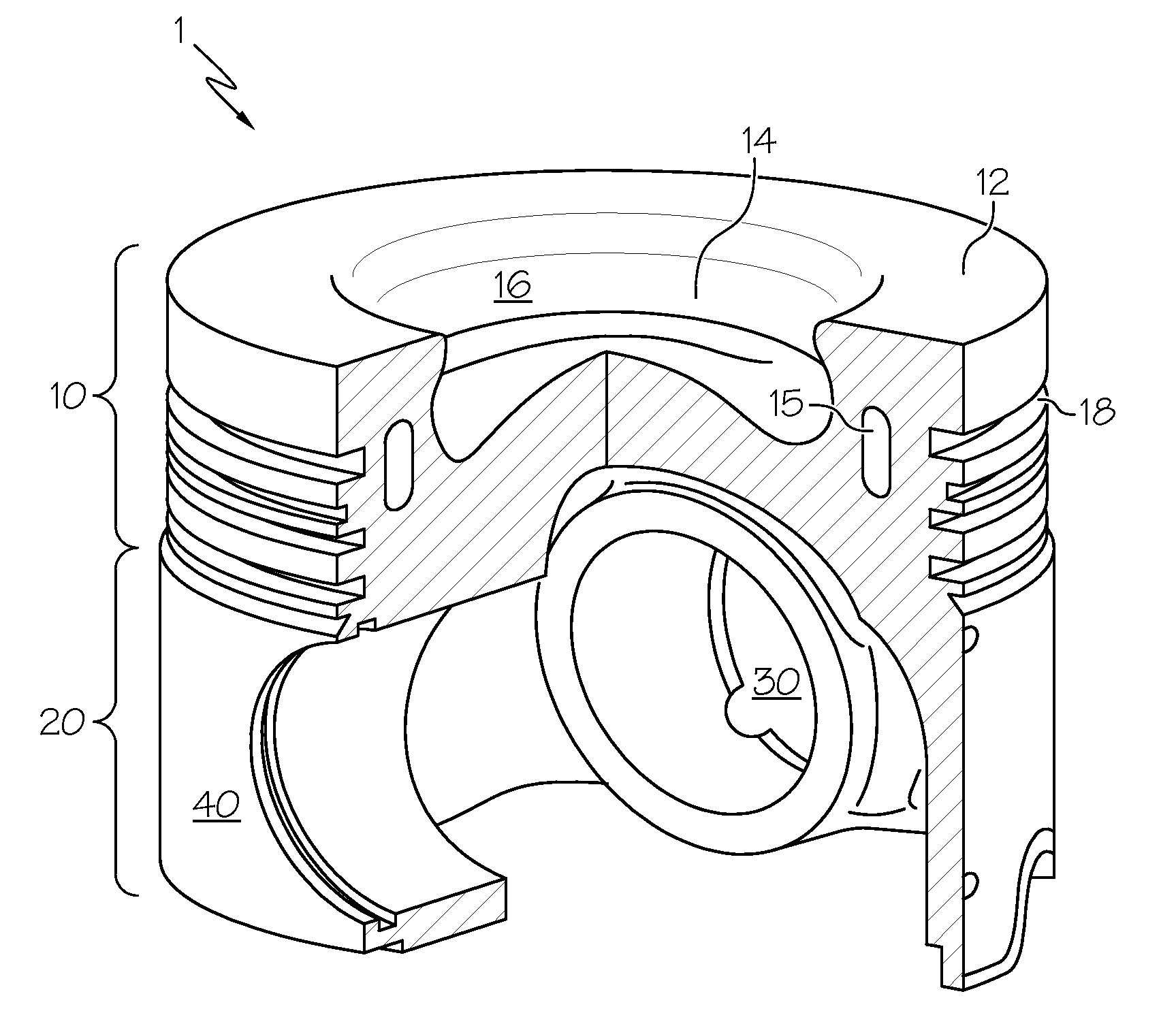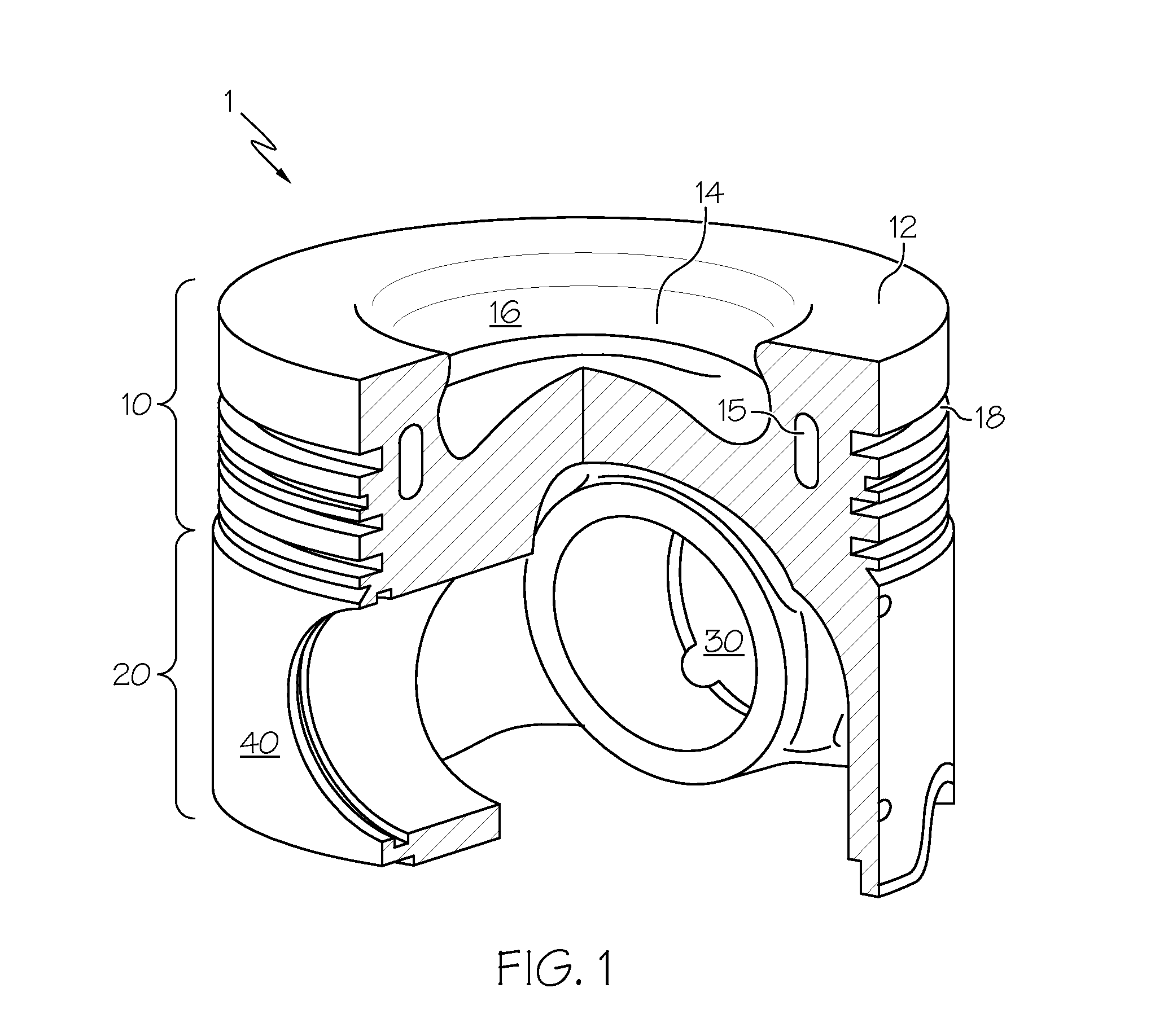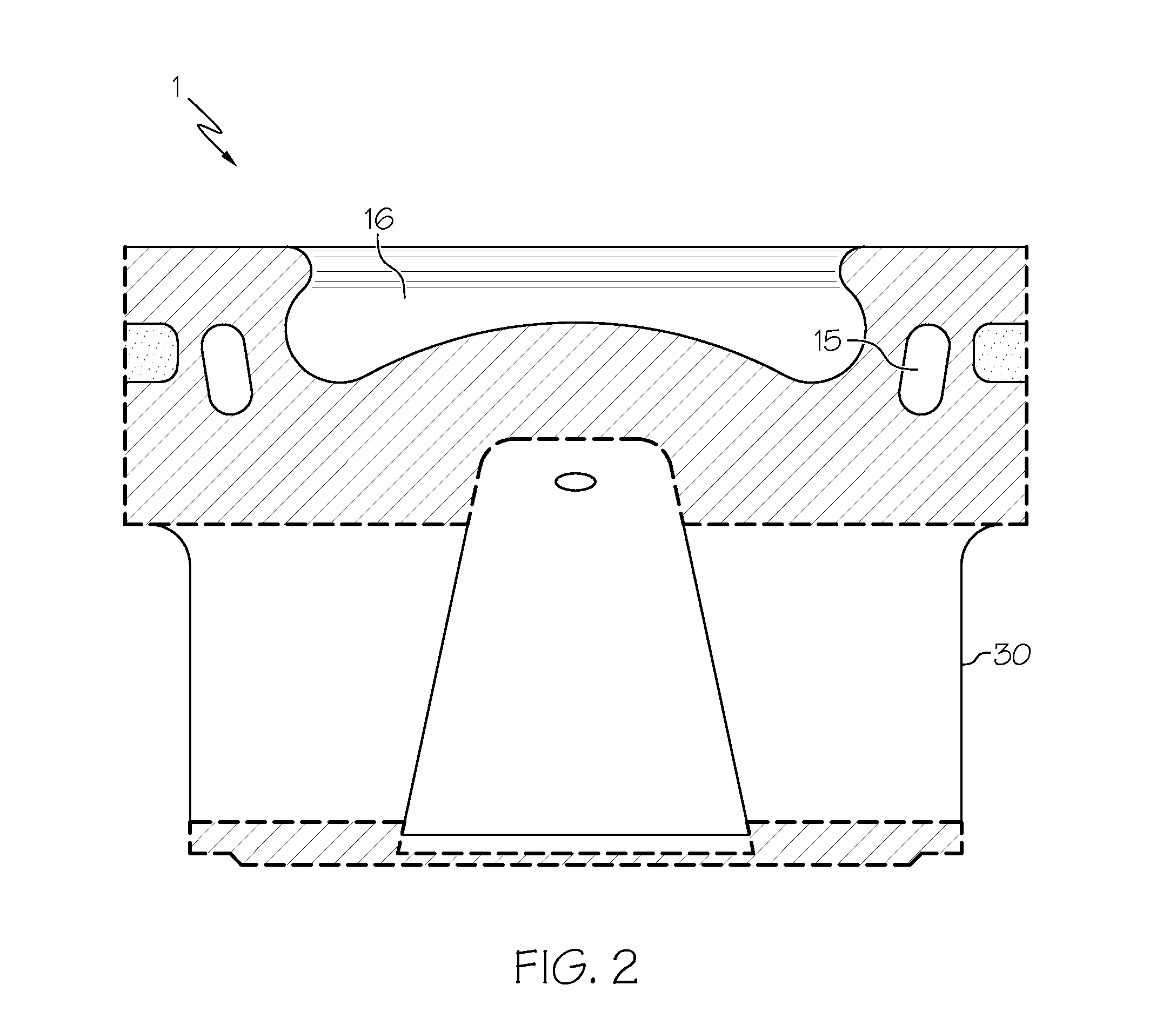Sand Casting An Aluminum Diesel Piston With An As-Cast, Reentrant Combustion Bowl For Light Or Medium Duty Diesel Engines
a diesel engine and combustion bowl technology, applied in the field of advanced aluminum-based diesel pistons, can solve the problems of significant additional cost or time, temperature regime around the crown and other combustion-adjacent components will produce undesirable effects on emissions and efficiency, semi-permanent and permanent mold casting processes are not well suited to forming complex shapes, and achieve the effects of reducing weight, reducing cost or time, and simplifying bearings and related support structures
- Summary
- Abstract
- Description
- Claims
- Application Information
AI Technical Summary
Benefits of technology
Problems solved by technology
Method used
Image
Examples
Embodiment Construction
[0020]Referring initially to the figures, the features associated with an aluminum-based diesel piston that may be cast in a manner as taught here are shown. In particular, piston 1 includes a crown section (also referred to as a crown) 10, a skirt section (also referred to as a skirt) 20 and a wrist pin bore 30. The crown 10 defines a generally planar upper surface 12 that defines a generally dome-shaped combustion bowl 14 therein. The wall 16 of bowl 14 is contoured and terminates at the upper portion thereof with a lip such that the overhang created thereby defines reentrant features of bowl 14. The outer radial surface of the crown 10 includes various longitudinally-spaced, circumferentially-extending grooves 18 into which piston rings (not shown) may be inserted to help with combustion-sealing and oil-scraping functions. Groove inserts 19 may be placed in one or more of the grooves 18. Skirt 20 may include longitudinally downward-extending sidewalls into which ribs, flanges and...
PUM
| Property | Measurement | Unit |
|---|---|---|
| temperature | aaaaa | aaaaa |
| pressure | aaaaa | aaaaa |
| operating pressure | aaaaa | aaaaa |
Abstract
Description
Claims
Application Information
 Login to View More
Login to View More - R&D
- Intellectual Property
- Life Sciences
- Materials
- Tech Scout
- Unparalleled Data Quality
- Higher Quality Content
- 60% Fewer Hallucinations
Browse by: Latest US Patents, China's latest patents, Technical Efficacy Thesaurus, Application Domain, Technology Topic, Popular Technical Reports.
© 2025 PatSnap. All rights reserved.Legal|Privacy policy|Modern Slavery Act Transparency Statement|Sitemap|About US| Contact US: help@patsnap.com



